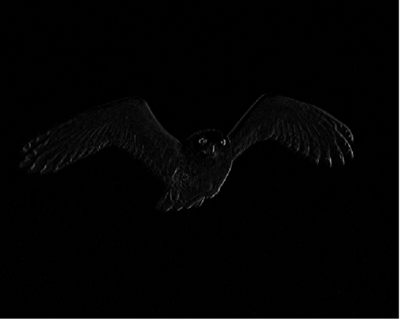sobelcv
Calculates the derivatives using the Sobel operator.
Syntax
R = sobelcv(handle, depth, dx, dy...)
R = sobelcv(handle, depth, dx, dy, ksize, scale, delta, type)
Inputs
- handle
- Handle of an image.
- depth
- Depth of R. A value of -1 will result in the same depth as
handle. Valid values are:
- -1
- Same depth as input.
- 0
- 8-bit unsigned integer [CV_8U]
- 2
- 16-bit unsigned integer [CV_16U]
- 3
- 16-bit signed integer [CV_16S]
- 5
- 32-bit floating point number [CV_32F]
- 6
- 64-bit floating point number [CV_64F]
- dx
- Order of derivative x, must be 0 or 1.
- dy
- Order of derivative y, must be 0 or 1.
- ksize
- Optional parameter specifying the size of extended Sobel kernel. Defaults to 3, valid values are 1,3,5 or 7.
- scale
- Optional parameter specifying the scale factor. Defaults to 1.
- delta
- Optional value to be added to each pixel of R. Default value is 0.
- type
- Optional parameter specifying the pixel extrapolation method. Default value is 4.
Valid values are:
- 0
- Type cv::BORDER_CONSTANT.
- 1
- Type cv::BORDER_REPLICATE
- 2
- Type cv::BORDER_REFLECT
- 4
- Type cv::BORDER_DEFAULT - default
- 16
- Type cv::BORDER_ISOLATED
Outputs
- R
- Handle of the resulting image.
Example
Use the Sobel operator on an image with default parameters:
Figure 1. Input image

Figure 2. Output image

handle = imreadcv('owl.jpg', 0);
depth = -1;
dx = 1;
dy = 0;
R = sobelcv(handle, depth, dx, dy);